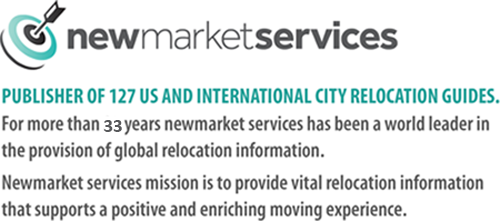What was once a vast expanse of prairie land and home to the native Omaha, Otoe, Pawnee and Ponca tribes is now one of the fastest growing urban areas in the Midwest. One of the first documented explorers in the area was Sieur de La Salle, a Frenchman who traveled the wilderness in the late 1600s. He named the area Louisiana and claimed the entire region, including Nebraska, in the name of France. For years, possession of the land shuffled between France and Spain, with ownership eventually granted to France by the Treaty of San Ildefonso in 1800.
Three years later, the United States purchased the Louisiana Territory under the Treaty of Paris for $15 million. This acquisition opened the area for exploration and eventual colonization. Two of the first Americans to experience the beauty of this vast prairie wilderness were Meriwether Lewis and William Clark. Their legendary 1804 expedition along the Missouri River brought their party of explorers to Omaha’s front door when a council was held with the Otoe and Missouri Indians, in the area now known as Fort Calhoun.
When reports of Lewis and Clark’s journey reached the already tamed East Coast, adventurous men and women alike packed up their homes and families and began the treacherous trek westward. The abundance of wide-open land, the endless supplies of food and furs, and the possibility of striking gold were attractive to these dream seekers and fortune hunters. Referred to as the “Gateway to the West,” Omaha had a proximity to the Missouri River that made it the perfect stopping-off point during the long journey west. The Oregon Trail crossed through Omaha, bringing millions of travelers through the area. Deep ruts carved by the covered wagons are still visible today. Mormons heading westward toward Utah set up Winter Quarters just north of town in what is now known as Florence. The harsh winter of 1846-1847 claimed more than 600 lives, and the Mormon Cemetery still stands on the site.
In 1854, the Omaha tribe relinquished its hold on the land, and with the assistance of the Kansas-Nebraska bill, the Nebraska Territory was opened for settlement. With this bill, the city of Omaha was founded. Omaha, which means “above all others upon a stream,” was named for the outcast Indian tribe. Initially, housing lots were free to anyone who would make improvements on them, but within three years, these same lots were sold for $4,000 each. As more people streamed into Omaha, shops, hotels, saloons and restaurants began springing up in and around the area now known as downtown. In 1860, Omaha drew national attention when Edward Creighton, for whom Creighton University is named, strung the first telegraph wires west. The Omaha-to-San Francisco line was completed two years later. In 1863, President Lincoln chose Omaha as the eastern terminus for the first transcontinental railroad. These historic developments would impact Omaha for years to come: Omaha currently boasts more than two-dozen telecommunications centers and is considered the “800-number capital of the nation.” It is also home to the Union Pacific Railroad, one of the biggest railroad organizations in the country.
Nebraska was granted statehood in 1867, at a time when Omaha’s population had grown to more than 30,000. The city’s astonishing growth continued with the opening of the area’s first meat packing plant in 1871, the founding of Creighton University in 1878, and the formation of warehouse and shopping districts and the establishment of the Union Stockyards in the 1880s.
1888 saw the opening of Fort Crook, a military establishment that would later become part of Offutt Air Force Base, home to the Strategic Air Command. Located within the Fort Crook facility was Martin Aircraft Corporation, builder of the legendary B-29 bombers the Enola Gay, which dropped the atomic bomb on Hiroshima in 1945, and Bock’s Car, which was used to drop the atomic bomb on Nagasaki three days later.
The 1898 Trans-Mississippi Exposition brought worldwide attention to Omaha and is considered the start of the “Golden Age” for the Nebraska farmer. In 1917, Father Edward Flanagan founded Girls and Boys Town, “a city within a city” for disadvantaged and troubled youth. Omaha continued to experience tremendous growth during the 20s, 30s and 40s. By 1948, Omaha was the largest supplier of meat products in the nation, generating more than $5 billion dollars for the city’s thriving economy.
Modern-day Omaha offers the best of both worlds, in that it combines the benefits of big city life with the warmth and friendliness of a small town. With more than 700,000 citizens, the city is a cosmopolitan urban center with scores of excellent restaurants, a world-class zoo, a regional medical center, 11 colleges and an active entertainment community. Builders recently broke ground on a multi-million dollar arena/convention center located just north of downtown, a testament to the exciting future that awaits those visiting and living in Omaha.
$market = “OMH" ;
global $market ;
[/insert_php]
[insert_php]
$market = “OMH" ;
[/insert_php]
